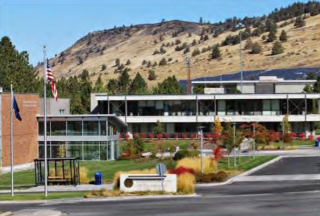CHP Technologies
A CHP system consist of individual parts—prime mover, generator, heat recovery, and electrical interconnection—configured into an integrated whole. The type of prime mover in use (i.e., the engine, turbine or fuel cell that drives the system) typically identifies the CHP system.
There are several types of CHP systems that use different prime movers, each with its own attributes, benefits, and performance characteristics. CHP systems can incorporate renewable fuels in the form of biomass and biogas. Sometimes they need additional equipment to process or refine these fuels. Waste heat to power (WHP) is another type of CHP system that converts waste heat from an existing thermal process into electric power. It is important for end-users to understand the various CHP technologies and choose the prime mover that makes the most sense for their facility electric and thermal loads, local fuel availability, and more.
EPA has created three resources to describe and characterize the various CHP technologies. These resources provide facility managers, project developers, policymakers and other interested parties with information about available CHP technologies, how they work, cost and performance data, and considerations for use.
Catalog of CHP Technologies
The Catalog of CHP Technologies provides an overview of how CHP systems work and the key concepts of efficiency and power-to-heat ratios. It also provides information about the cost and performance characteristics of five commercially available CHP prime movers. Sections include:
- Full Document: Catalog of CHP Technologies (pdf)
- Section 1: Introduction (pdf)
- Section 2: Technology Characterization-Reciprocating Engines (pdf)
- Section 3: Technology Characterization-Combustion Turbines (pdf)
- Section 4: Technology Characterization-Steam Turbines (pdf)
- Section 5: Technology Characterization-Microturbines (pdf)
- Section 6: Technology Characterization-Fuel Cells (pdf)
- Section 7: Packaged CHP Systems (pdf)
- Appendix A: Expressing CHP Efficiency (pdf)
| System Size | Prime Mover | Fuel Type | Installation Year | Emissions Reduction |
|---|---|---|---|---|
| 335 kW | Reciprocating Engine | Natural Gas | 2007 | 70% |

The Cape Codder Resort and Spa is open year-round with 260 beds, an indoor swimming pool, and an outdoor heated swimming pool. In order to avoid the high energy costs prevalent on Cape Cod, the Cape Codder Resort and Spa sought to utilize CHP to meet their energy demands. The resort installed two packaged units from Co-Energy America, one 250 kW system in 2007, and an 85 kW system in 2009. The 250 kW system provides domestic hot water to the resort while heating the indoor wave pool while the smaller 85 kW system also provides domestic hot water and heats the outdoor pool. The system is able to black start in the event of an outage and provides power to critical loads which include the hotel’s kitchen, ballroom, and one wing of the resort when grid electricity is unavailable.
Waste Heat to Power
Waste Heat to Power Systems (pdf) provides facility managers, developers, and other interested parties with a comprehensive overview of WHP systems and a characterization of the WHP market. Specific topics addressed include the following:
- Introduction to WHP and a description of key WHP technologies
- Key factors that affect the economic feasibility of WHP
- Description of the most promising WHP applications
- Typical installed costs and generating costs for WHP
- Current market penetration of WHP systems in the United States
- Market barriers to WHP
- Case studies of successful WHP projects
DOE also has a WHP fact sheet, and the Heat is Power association has more resources available on WHP benefits, policies, and applications.
| System Size | Prime Mover | Fuel Type | Installation Year | Annual Energy Savings |
|---|---|---|---|---|
| 2.03 MW | Organic Rankine Cycle | Geothermal Hot Water | 2010, 2018 | $1,500,000 |

Oregon Institute of Technology operates a unique organic rankine cycle (ORC) system using waste heat from the school’s geothermal heating system. The ORC system converts low temperature heat collected from the campus’s geothermal reservoir and converts it into electricity. Following the success of a 280 kW installation, the school expanded the plant by adding a 1.75 MW ORC system.
Biomass CHP Catalog of Technologies
The Biomass CHP Catalog of Technologies provides facility managers, developers, policymakers, and other interested parties with a detailed technology characterization of biomass CHP systems. The report reviews the technical and economic characteristics of biomass resources, biomass preparation, energy conversion technologies, power production systems, and complete integrated systems. Sections include:
- Full Report: Biomass Combined Heat and Power Catalog of Technologies (pdf)
- Section 1: Introduction and Overview (pdf)
- Section 2: Basic First Steps and Considerations (pdf)
- Section 3: Biomass Resources (pdf)
- Section 4: Biomass Preparation (pdf)
- Section 5: Biomass Conversion Technologies (pdf)
- Section 6: Power Generation Technologies (pdf)
- Section 7: Representative Biomass CHP Systems Cost and Performance Profiles (pdf)
- Appendix C: Landfill Gas (pdf)
- Appendix D: Anaerobic Digesters (pdf)
The Biomass CHP Catalog of Technologies was developed in 2007. Although some of its information is outdated, it can still be used to understand the use of biomass for CHP technologies.
| System Size | Prime Mover | Fuel Type | Installation Year | Annual Energy Savings |
|---|---|---|---|---|
| 1.796 MW | Reciprocating Engine | Biogas | 2016 | $800,000 |

The Durham Advanced Wastewater Treatment Facility needed to replace an aging 500 kW system which could not handle the amount of biogas produced by the facility. The plant launched a large system upgrade which enabled it to produce more biogas by incorporating a fats, oils, and grease recovery station along with its existing anaerobic digesters and installing two 848 kW reciprocating engines. These new engines enable the facility to not flare any excess biogas and remove fats, oils, and grease waste from local landfills.
